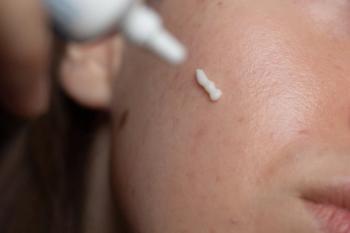
Derm Dispatch: Creating Equitable Access in Underserved Communities Through Teledermatology
Key Takeaways
- The teledermatology initiative targets underserved communities in Washington, DC, addressing healthcare disparities exacerbated by the COVID-19 pandemic.
- Community-based teledermatology clinics were established in churches, enhancing trust and access through partnerships with the Rodham Institute and local clergy.
Renata Block, DMSc, MMS, PA-C, speaks with Adam Friedman, MD, FAAD, on innovative teledermatology initiatives in Washington, DC, addressing health care disparities and enhancing community access.
In a recent interview for Derm Dispatch, Renata Block, DMSc, MMS, PA-C, sat down with Adam Friedman, MD, FAAD, to discuss his pioneering teledermatology initiative targeting underserved communities in Washington, DC. Friedman, professor and chair of dermatology at George Washington University (GW), described how the COVID-19 pandemic catalyzed the rapid adoption of telemedicine and revealed glaring disparities in access, particularly in DC Wards 7 and 8, which historically suffer from health care deficits.
Observing that only 1% of more than 1500 telemedicine patients were from these areas, despite their large representation in GW’s typical patient population, Friedman secured a Pfizer Quality Improvement Grant to address the gap. The project, in partnership with the Rodham Institute and local clergy, launched community-based teledermatology clinics in churches to enhance trust, education, and access.
“I think that's a big part of the bigger picture...it's about observing, it's about asking questions, it's about doing something, and then, of course, the timing of it all...this grant came about, and it was a perfect marriage of sorts,” Friedman said.
The model has since evolved from simple telehealth visits to comprehensive health fairs offering disease-specific education, comorbidity screening, and onsite support from trained navigators and medical students. Conditions such as atopic dermatitis, alopecia areata, and psoriasis have been key focus areas, with educational materials provided in collaboration with large-scale organizations, including the National Psoriasis Foundation and National Eczema Association. Initial patient interaction culminates in a structured teledermatology visit and participation in clinical surveys and research.
Friedman emphasized the importance of adaptability, community partnerships, and sustainability when evolving this model. Infrastructure challenges included coordinating space and staffing, but leveraging strong relationships with GW’s development team and other academic institutions enabled continued growth. Educational benefits also extend to residents and students, who gain hands-on experience with telemedicine and diverse skin presentations.
With philanthropic support from Pfizer Inc, Eli Lilly and Company, and Johnson & Johnson, Friedman has successfully continued the model with a focus on multiple conditions, aiming to expand to other cities soon. For those interested in launching similar programs, Friedman underscores the need for long-term planning, fundraising strategies, and authentic community engagement from the outset. This unique initiative offers a scalable, patient-centered framework that blends innovation, outreach, and education to reduce dermatologic care disparities and foster sustained community trust.
“I think it's very easy to get overwhelmed with the enormity of how many patients need our help, but just even getting their foot into the door or getting things started and maybe lessening the burden by intervening early...having a validation of sorts with the community that we're not just showing up thinking, ‘We're superheroes, we're going fix the problem,’ but rather, we're here for the long haul,” Friedman said.
Newsletter
Like what you’re reading? Subscribe to Dermatology Times for weekly updates on therapies, innovations, and real-world practice tips.


















